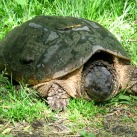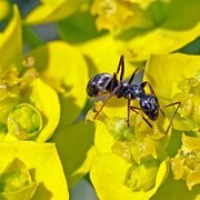Given my recent blog about robins and their relationship with worms, it seems appropriate for me to give equal time to the worms. I’ve been reading a very interesting book, The Earth Moved by Amy Stewart. This particular book is about earthworms. It has received rave reviews by The New York Times, the Boston Globe, the Washington Post and others. I understand why. I started reading it and couldn’t put it down. Who knew that text about the finer details of those wiggly worms would be so interesting!
As Stewart puts it, the book is about “the remarkable achievements of earthworms.” According to Charles Darwin, “It may be doubted whether there are many other animals which have played so important a part in the history of the world, as have these lowly organized creatures.” Earthworms are among our most plentiful life forms.
Common earthworms are the largest members of the class Oligochaeta in the phylum Annelida. They are a grayish-red in color. Worms react to stress just like any other organism. While they are not slimy, they will secrete moisture (worm mucus) when touched or when their environment is disturbed. Only a few inches long, they will thrive under optimal conditions and subsequent generations will be longer and bigger around.
Let’s take a trip back to high school biology, a course I particularly loved. While it was 45 years ago, my memory has (remarkably) pulled out some of what I learned. The earthworm is a tube made up of a series of segmented rings (called annuli). It is an invertebrate, without a skeleton, but its shape is created by chambers filled with fluid. The segments are covered in bristles called setae that help the worm to burrow and move. (I remember diagramming this as clear as if it were yesterday!) The digestive system runs straight through the tube. The worm breathes through its skin and has a rudimentary circulatory system and a primitive brain.
The first segment of the earthworm contains its mouth. In the act of burrowing, the mouth ingests soils so the earthworm can take in nutrients from the decomposed organic matter in the soil. Actually, the nutrients come from the bacteria and fungi that grow in the decomposing matter. Worms can eat up to one-third of their mass in soil each day. Night crawlers are labeled as such because they are earthworms that feed and mate on the surface at night and burrow in to the soil during the day.
Earthworms are hermaphrodites with both male and female parts. However, they need another worm to reproduce. After mating, an earthworm will produce a little cocoon that is shaped like a small lemon – obviously a very small lemon – and colored dirty yellow to brown. The cocoon is produced from a liquid secreted from a sac located in the front third of the worm. Both sperm and egg cells are in the cocoon when it is formed and buried. It takes two to four weeks for the new worms to come forth.
But here’s the cool thing about earthworms: they are essential to healthy soil. Worms can burrow as deep as six and a half feet. With that activity, they are shredding and mixing nutrients and decomposed organics, aerating the soil, and keeping its texture loose so water can easily permeate and be retained and plants can take root. Earthworms create casts (feces) as they digest soil and its associated microbes. They generate tons of casts per acre each year, drastically affecting soil structure by adding many more microbes than they consume. More microbes facilitate the conversion of nutrients from decomposing organic matter into forms that plants can absorb. Brilliant!
The presence of earthworms indicates healthy soil. They turn the soil and mix nutrients from the top soil into the lower levels. According to the NRCS (USDA Natural Resources Conservation Service) website, “they can turn over the top six inches of soil in ten to twenty years.” Amy Stewart calls earthworms “nature’s plough.” It is estimated that in one square yard of fertile, organic soil, as many as 500 worms may be living. Anyone want to calculate the number of square yards per square mile times 556 square miles to estimate the number of earthworms in the National Heritage Corridor?
Earthworms are food for other animals like rats, birds and toads. They are used as bait in both commercial and recreational fishing. And they are the star of the home/business worm composting systems, where earthworms consume decomposing food scraps and create soil with their castings.
Darwin also said that “Archaeologists are probably not aware how much they owe to worms for the preservation of many ancient objects. Coins, gold ornaments, stone implements, etc. if dropped on the surface of the ground, will infallibly be buried by the castings of worms in a few years, and will thus be safely preserved, until the land at some future time is turned up.”
Who knew?


